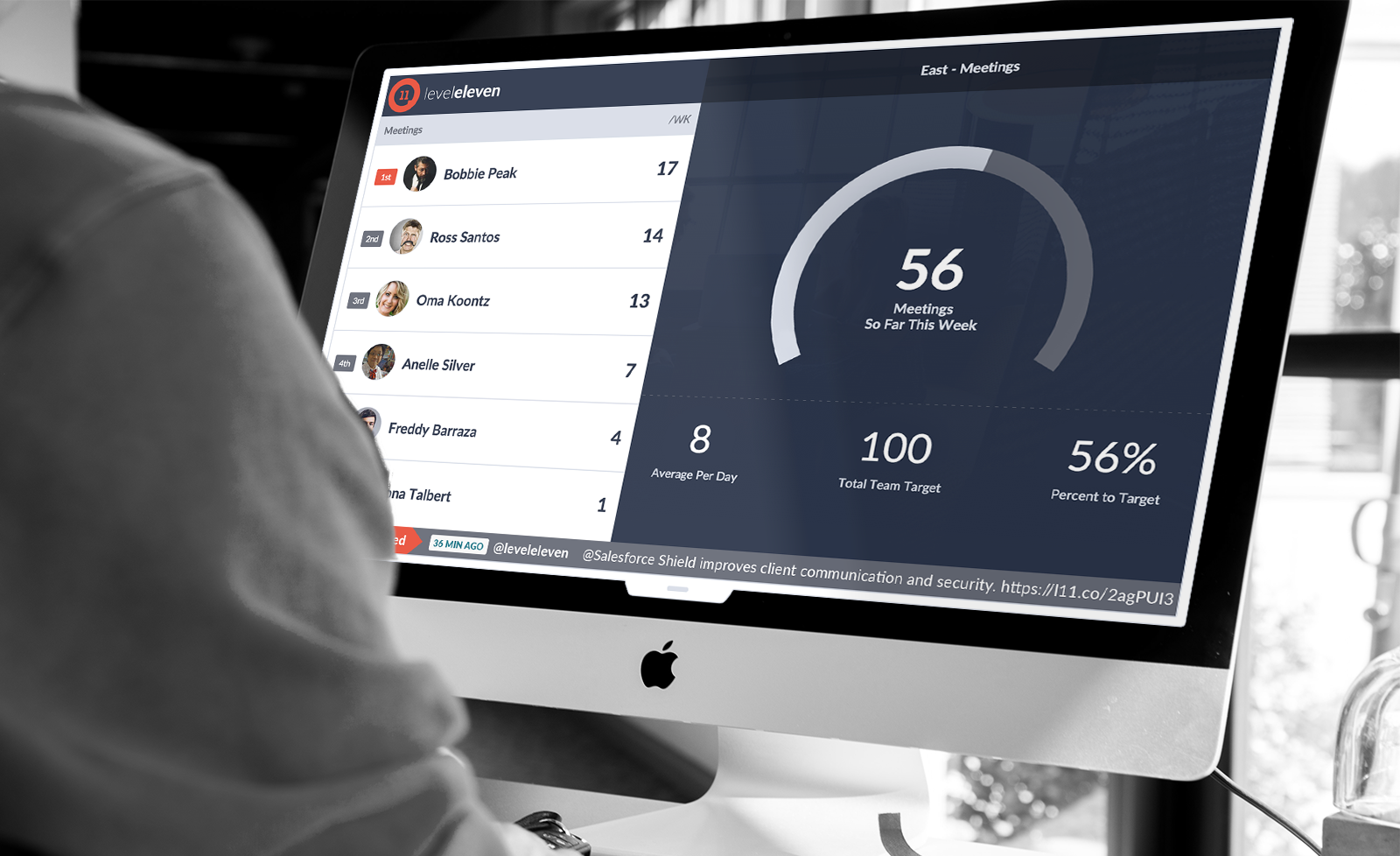 When you’re in sales, the most important metric is always closing business. But to reach that result, certain fundamentals need to be in place and happen with consistency.
When you’re in sales, the most important metric is always closing business. But to reach that result, certain fundamentals need to be in place and happen with consistency.
“Many people miss the basic fundamentals that they already know they need to do that will lead to success. People get lost in the whirlwind of the day or week, and miss the basics. We do this in our personal lives too – we know we should exercise 5-times a week, but just don’t do it,” said Bob Marsh, CEO of LevelEleven.
Luckily, LevelEleven is built to help keep those fundamentals front-and-center and provides easy ways to reinforce them for organizations of all shapes and sizes. Here’s a quick breakdown of five of the most important sales fundamentals that tend to be forgotten and how LevelEleven keeps them top-of-mind:
1. Call the Right People
This is the oldest fundamental out there, and one that even with today’s technology keeps getting missed – you have to pick up the phone.
“Some salespeople have an aversion to hammering away on the phone to get through a list and keep calling people when most of the time nobody picks up. But it’s a key fundamental and you just have to do what you can to create conversations,” said Bob.
This is a good example where any salesperson will understand this concept, but then just not do it regularly. But we all know salespeople are competitive and are wired to pursue a goal when it’s put out in front of them. This is why it’s important to be clear about expectations that are based on what it takes to be successful.
“Reverse engineering your sales process with your salespeople involved is key here so they can map it all together. For example, if you have a $1 million quota, you need to build $4 million in pipeline, which will require 40 new business meetings per month, which will require making 50 calls a day to get those meetings. When it’s mapped out that way, salespeople will start seeing each call as the step toward hitting quota,” said Bob.
LevelEleven helps this by giving each salesperson their own personal Scorecard of how they’re doing against their call goals, including if they are on, behind or ahead of pace. When making those goals front-and-center versus needing to go hunt down a report and trying to decipher what it’s saying, salespeople respond and change their behavior accordingly.
2. Talk to People
Another key fundamental is the need to talk to people consistently. Similar to making calls, for many sales professionals this can often be often forgotten throughout the daily grind, especially when it seems like there are lots of email exchanges going on with prospects.
“Salespeople can get very busy writing proposals, researching contacts, or planning their trips but they’re simply not talking to enough people. There are all kinds of sales and marketing technology that can feel like a sales rep’s silver bullet, but the reality is that without actually talking to people consistently you’ll never get the success you want,” said Bob.
“LevelEleven helps you identify how many people you need to talk to per day, per week, per month – whatever it might be that will help you reach your sales goals. If you want to generate 10 opportunities per month, how many people do you need to talk to create 10 opportunities? LevelEleven answers that question and helps you meet your ‘talk time’ goals.”
So, how does LevelEleven make this sales fundamental more actionable?
“With LevelEleven, the most common and consistent metric used by sales teams are meetings or conversations. By helping companies set conversation-based goals you can help keep a salesperson on track. It’s similar to how a FitBit tracks your activity to help you reach your health and fitness goals,” said Bob.
3. Build Pipeline
Next, you need to be building pipeline from all those conversations.
“Many salespeople go through ebbs and flows and build up a whole bunch of pipeline over a couple of months. Then they get hyper-focused on closing pre-existing opportunities that they forget to continue to build pipeline. As a result, they have to start all over again once those deals are finalized and the cycle happens again,” Bob said.
“You need to build pipeline consistently because you always need to be developing for the future. With LevelEleven a common metric we build for clients is what we call a Waterline metric because the salesperson can see if their total open pipeline is above or below some defined waterline. For example, if a rep should have 4x their quota in pipeline that is at stage 3 or later, we can tell the rep exactly where they stand. Through our pacing algorithm color coding, it’s very clear to the rep that when the waterline metric goes in the red, they need to start building pipeline. Without this front and center, you just don’t know,” said Bob.
4. Advance the Sales Process
“Once you have an opportunity, you need to build a plan to take it to the next stage,” said Bob.
“Sometimes salespeople get so hung up on getting to the win and what can they close this month, they aren’t thinking about the next step in the process for the early stage opportunities. They should be asking themselves, ‘What’s the next best step to take here? What do I need to do to move this opportunity one step further, and therefore closer to winning it or qualifying it out?’” said Bob.
“It’s important to build a customer-centric process. I like when companies have their opportunity stages in Salesforce.com mapped to the buyer’s process, versus the company’s desired sales process. It’s a nuance, but in today’s age, you just have to be focused on helping the customer buy – not selling AT them. Sometimes salespeople don’t see the sales stages as something that can help them, rather they see it as a corporate measurement system to track them. But the process is actually there to guide the salesperson based on historic wins and losses. It allows them to focus on what’s in front of them, and not get tunnel vision focusing on the end goal,” said Bob.
“As a salesperson, you have to operate like a project manager because sometimes what you want to sell your prospect isn’t their top priority at the moment – it’s a big deal to you, but just a small list of to-do items for them. By staying in front of the customer as a project manager would you can lay out the steps to help them move through the process effectively,” Bob said.
5. Track Your Progress
However, no sales process can thrive without proper tracking of key metrics. Something even the most established companies overlook at times.
“Companies want to know, ‘How do I keep track of key metrics?’ Some companies try to do this through Salesforce reports and dashboards. The challenge is those can be difficult to decipher and not every salesperson takes the time to go find them, let alone decipher what they are saying and the resulting actions they should take,” said Bob.
“This is the place where LevelEleven shines,” Bob said.
“You need to track progress, but most importantly you need to put that information in front of sales reps so they know where they stand and what actions they need to take. After all, they want to be successful, hit their goals and make money. But if that information isn’t front-and-center it’s far more difficult for them to do that,” said Bob.
LevelEleven provides that front-and-center visual for salespeople, sales managers and sales executives. With that type of visual aide into the sales process, the entire team can identify which fundamentals they excel at and which they need to improve upon. The end result – a synchronized sales team that’s operating at maximum productivity.
Would you like to learn more about LevelEleven? Visit the link below to explore our success stories!



